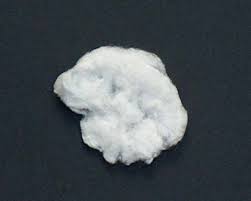CELLULOSE NITRATE PLASTIC
Cellulose nitrate plastic, also known as celluloid, is a type of thermoplastic material derived from cellulose, a natural polymer found in plant cell walls. It is produced through a chemical reaction between cellulose and a mixture of nitric acid and sulfuric acid, which results in the nitration of cellulose.


Properties of Cellulose Nitrate Plastic:
Transparency: Cellulose nitrate plastic is inherently transparent, allowing light to pass through it. This property makes it suitable for applications requiring clarity, such as in the production of films, photographic negatives, and transparent sheets.
Flammability: One notable characteristic of cellulose nitrate plastic is its high flammability. It is highly combustible and can burn rapidly when exposed to heat or flames, which can be a safety concern. Special precautions are necessary for its storage and handling.
Moldability: Cellulose nitrate plastic is a thermoplastic material, meaning it softens when heated and can be easily molded into various shapes. This property allows it to be formed into intricate designs, making it useful for manufacturing items such as buttons, combs, and decorative objects.
Chemical Sensitivity: Cellulose nitrate plastic is sensitive to certain chemicals, including solvents like acetone and alcohol. Exposure to incompatible substances can cause the plastic to swell, deform, or degrade. It is important to handle and store cellulose nitrate plastic away from such substances.
Applications of Cellulose Nitrate Plastic:
Photographic Film: In the early days of photography, cellulose nitrate plastic was used as the base material for photographic films. It provided a flexible and transparent medium for capturing and developing images.
Film and Sheet Production: Cellulose nitrate plastic is utilized in the production of thin films and sheets for various applications. These include packaging films, protective coatings, transparent coverings, and overhead transparencies.
Consumer Goods: Cellulose nitrate plastic is commonly found in consumer goods such as buttons, hair accessories, toys, and novelty items. Its moldability allows for the production of intricate designs and patterns.
Historical Artifacts: Cellulose nitrate plastic was used extensively in the past for the production of jewelry, vanity cases, and other decorative items. Many historical artifacts made from cellulose nitrate plastic are now considered valuable collectibles.
N.B
When working with or identifying cellulose nitrate plastic, it is important to exercise caution, follow proper safety guidelines, and consult professionals with expertise in handling and assessing vintage or historical items.

